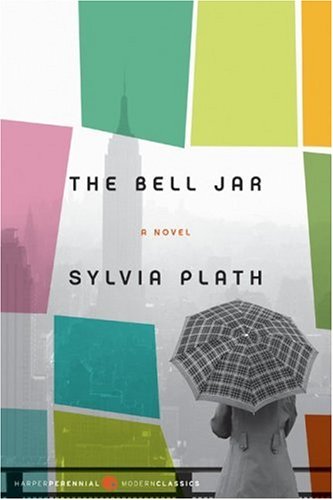All Nonfiction
- Bullying
- Books
- Academic
- Author Interviews
- Celebrity interviews
- College Articles
- College Essays
- Educator of the Year
- Heroes
- Interviews
- Memoir
- Personal Experience
- Sports
- Travel & Culture
All Opinions
- Bullying
- Current Events / Politics
- Discrimination
- Drugs / Alcohol / Smoking
- Entertainment / Celebrities
- Environment
- Love / Relationships
- Movies / Music / TV
- Pop Culture / Trends
- School / College
- Social Issues / Civics
- Spirituality / Religion
- Sports / Hobbies
All Hot Topics
- Bullying
- Community Service
- Environment
- Health
- Letters to the Editor
- Pride & Prejudice
- What Matters
- Back
Summer Guide
- Program Links
- Program Reviews
- Back
College Guide
- College Links
- College Reviews
- College Essays
- College Articles
- Back
The Bell Jar by Sylvia Plath
There are abundant reasons to be thankful with the lives we are given. In The Bell Jar, a mood altering novel written by Sylvia Plath, describes the living conditions of a young, collegiate woman, that doesn’t have her priorities figured out. Esther, the main character, is a young writer that cannot decide between her career or her hopes of one day having a family. Esther has never had much luck with the male gender which causes her to assume that her career will be her one and only love. Throughout the book, flashbacks appear in Esther’s memory. She recalls that she was only happy in her life until she was of the young age of nine, when her father passed away. Also, she reminisces of her last relationship with a man named Buddy, a medical student at Yale. As the story continues, Esther’s happiness diminishes.
The cliffhanger ending of this book makes me yearn for another, although no room is left for a sequel. The events in Esther’s life, a parent dying, a relationship ending, nearly being raped, a friend committing suicide, all lead to Esther’s overall sense of life. Also, the deep consideration and thoughts of Esther interest me. Though she wants to commit suicide, she tells herself that she doesn’t hate herself, but that she wants the exhilaration and the adrenaline of the dangerous endeavor. This interests me because Esther is quite obviously clinically depressed. The book is mainly a debate between Esther’s mind and her actions. After spending much needed time in a hospital, and later an asylum, Esther finally feels well enough to continue with her life. Her ability to put her life back together after crushing it into pieces inspires me.
After reading the book, I found out that the storyline is based off of Plath’s life. Although Plath’s early life was a struggle, she came out of her horrific disease of severe depression, and wrote many great novels and books of poetry, including The Collected Poems which won the Pulitzer Prize. This is another inspirational way that Plath manages to hypnotize her readers, and earn the overall feeling of immortality. Plath successfully interprets the theme of growing from pain and change. Throughout the challenging life of Esther, after hitting ‘rock bottom’ Esther manages to pull herself back on her feet and pick up her life where she left it, a symbol of extreme strength and determination.
I would recommend this book to an older audience, mainly because of the mature thoughts and sexual references used. The language and foreshadowing can come off a bit confusing, but connections and references made to the text throughout the remainder of the book help to figure the comparisons used. Men or women could benefit from reading this book. The book is tough to read, with the horrific events that occur, but all in all is an inspirational story to any audience. This book is a short read, and entertains the reader all through.
Similar Articles
JOIN THE DISCUSSION
This article has 0 comments.

